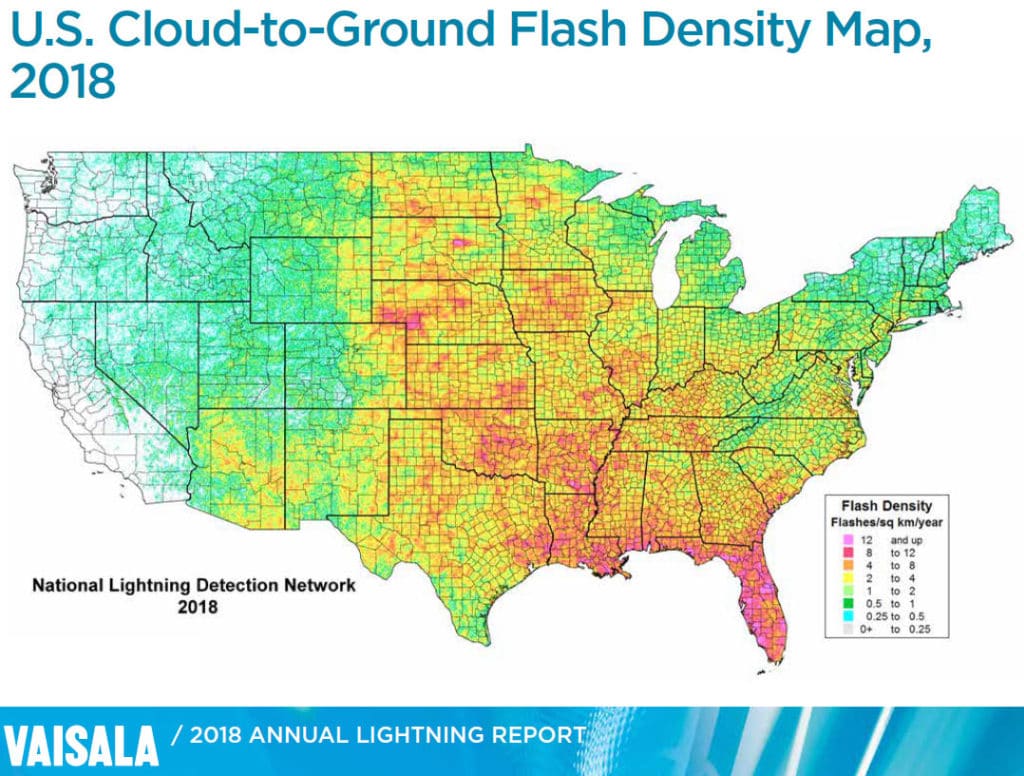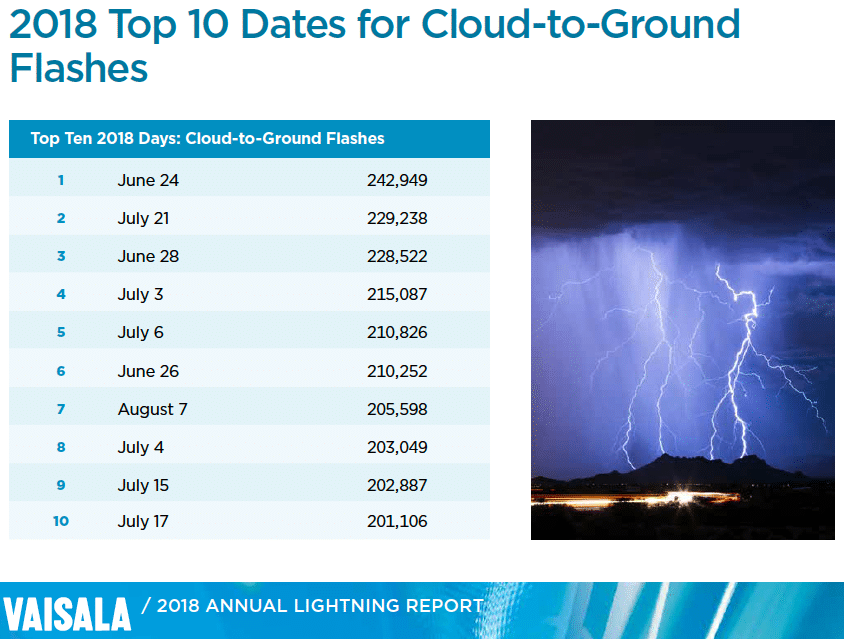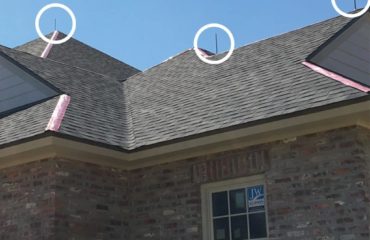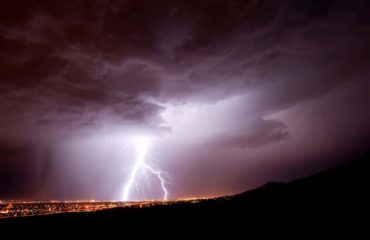
Vaisala, a global leader in weather and industrial measurements, recently released their much anticipated 2018 Annual Lightning Report. The report highlights lightning data collected from Vaisala’s worldwide system and helps give us a clearer picture of the amount and intensity of lightning that occurred in the US in 2018. Below are 4 takeaways that homeowners should review and consider as we move into the heart of the 2019 lightning season.
Florida Saw A Very Active 2018 Lightning Season
Florida is consistently at the top of lightning reports year after year and 2018 was no different. The Sunshine State ranked #2 in total lightning strikes with 1,385,710 and #1 in flash density at 9.34 per square km. Lightning is a scary reality for homeowners and homebuilders on The Panhandle and throughout the state.
Louisiana And The Rest Of The Gulf Coast Are A Lightning Hotbed
The rest of the Gulf Coast is not far behind Florida when it comes to flash density. Louisiana (#2), Mississippi (#4), and Alabama (#6) all ranked in the top 10. Homeowners in these states should exercise extra caution when it comes to protecting their homes and electronics from the dangers of lightning.

The Peak Lightning Season Shifted Later in 2018
The top 10 dates for strikes in 2018 all fell within June, July, and August. That was a later shift compared to 2017 when April, May, and June were the most active. What’s this tell us? Every year is slightly different, so homeowners should prepare for intense lightning activity that can stretch from early Spring to late Summer.
Southeast Texas Stays Lighting Hot
Texas saw the highest total number of strikes in 2018 with 2.4 million. Texas outranks the rest of the lower 48 when it comes to landmass, but it also features some very high-density areas. One of those is active areas is the Southeast area from Austin and East to the state line through Houston. The area is prone to strong storms moving East across Texas and lightning packed storms moving off the Gulf of Mexico.






